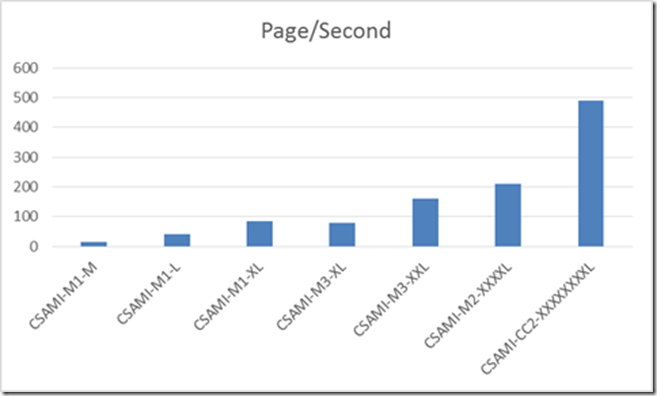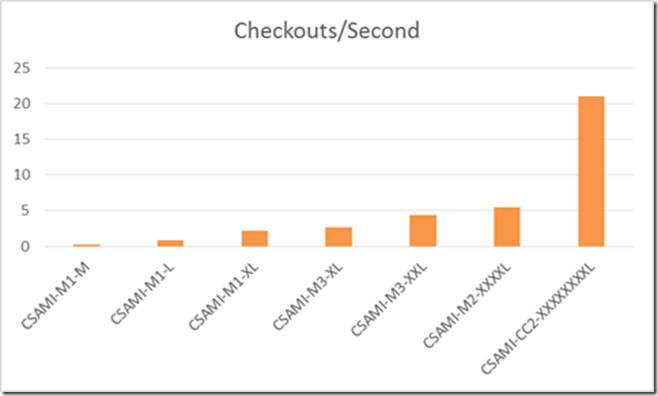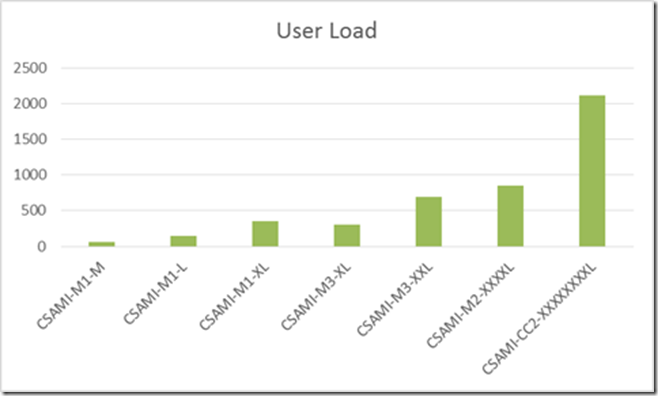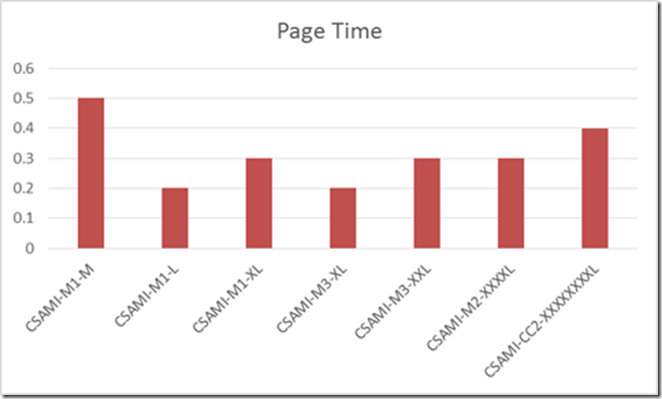Evaluating EC2 Instance Sizes with Commerce Server 10.1 on Amazon Web Services
To help customers get the most out of our newfound Amazon Web Services, we wanted to provide some guidance on Commerce Server performance as compared between Amazon EC2 instance sizes when running on top of Windows Server 2012 and SQL Server 2012. To do this, we maxed out a single box configuration running the standard performance tests in our performance whitepaper.
In terms of Pages per Second, it is a fairly linear ramp up the various instance sizes available in AWS. It should be noted, however, that the M1 XL is actually slightly better performing than the M3 XL. All is shown in the following graph:
Checkouts per second also follows the same trend and same observations regarding M1 XL and M3 XL instance types:
User load trend is also consistent as well – with the exception being that the M1 XL can outpace the M3 XL:
However, differences come up in page time, whereupon the trend is not as uniform. Instead, the M1 L and M3 XL deliver the best page times, followed by a near tie of the M1 XL, M3 XXL, and M2 XXXXL, shown as follows:
In terms of price and performance, the instance types used rank as follows from least to most expensive:
Instance Type |
Friendly Name |
CSAMI-M1-M |
Standard On-Demand Medium with Windows Server 2012 and SQL Server 2012 Standard |
CSAMI-M1-L |
Standard On-Demand Large with Windows Server 2012 and SQL Server 2012 Standard |
CSAMI-M1-XL |
Standard On-Demand Extra Large with Windows Server 2012 and SQL Server 2012 Standard |
CSAMI M3-XL |
Second Generation Standard On-Demand Extra Large with Windows Server 2012 and SQL Server 2012 Standard |
CSAMI-M3-XXL |
Second Generation Standard On-Demand Double Extra Large with Windows Server 2012 and SQL Server 2012 Standard |
CSAMI-M2-XXXXL |
High Memory On-Demand Quadruple Extra Large with Windows Server 2012 and SQL Server 2012 Standard |
CSAMI-CC2-XXXXXXXXL |
Cluster Compute Eight Extra Large Windows Server 2012 and SQL Server 2012 Standard |
In terms of which instance type is “right” – there is no “correct” answer; instead one should size based on expected traffic and weigh the tradeoffs of fewer, larger instances versus more, smaller instances. However, the standout here is the M1 XL instance, as it is the exception to an otherwise linear curve, offering superior Pages/Second and User Load than the next-up and at-time-of-writing more expensive M3 XL instance.
Hope this helps!



